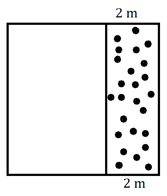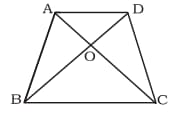EASY
Earn 100
What is rhombus.
Important Questions on Quadrilaterals and Circles
EASY
EASY
EASY
Land is acquired for road widening from a square ground, as shown in the figure. The width of the acquired land is . Area of the remaining ground is . What is the shape of the remaining ground?

EASY
HARD
The perimeter of a rectangle is 42 cm. If its diagonal is 15 cm long, find the breadth of the rectangle.
(A) 8 cm.
(B) 10 cm.
(C) 9 cm.
(D) 7 cm.
MEDIUM
X, Y and Z are the midpoints of the sides of ∆PQR. If the perimeter of ∆XYZ is 32 units, find the perimeter of ∆PQR.
(A) 128 units
(B) 64 units
(C) 96 units
(D) 160 units
EASY
MEDIUM
MEDIUM
EASY
EASY
MEDIUM
All squares are quadrilaterals.
MEDIUM
EASY
MEDIUM
EASY
MEDIUM
In the adjoining figure, is a trapezium in which and its diagonals interest at . If , , and then is equal to:

MEDIUM
EASY

